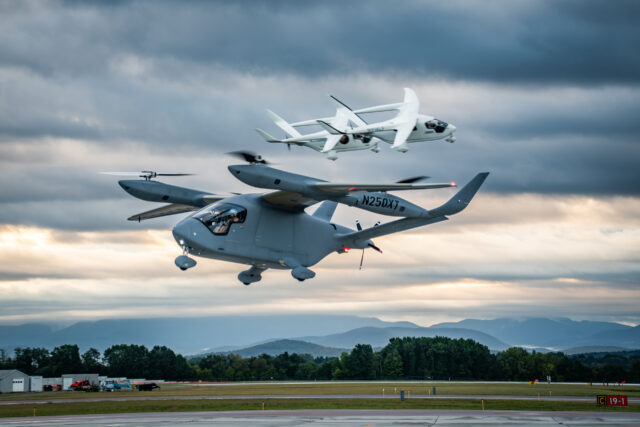Taxing aviation could fund billions in climate action, but at what cost to the industry?

August 4, 2025

With European climate policymakers eyeing aviation taxation as a lucrative and underused tool, a fierce debate has reignited between environmental campaigners and the airline industry over how to fund decarbonisation fairly and effectively.
A new policy briefing from Carbon Market Watch (CMW) claims that a full expansion of the EU Emissions Trading System (EU-ETS) to cover all departing and arriving flights, private jets, and aviation’s non-CO₂ climate impacts could raise nearly €500 billion between now and 2040. That figure is nearly five times the revenue expected under the EU-ETS’s currently limited scope.
The environmental NGO says these reforms are not only overdue, but also have strong public backing. Citing Eurobarometer polling and other research, CMW notes that over 75% of EU citizens support ending fossil fuel subsidies, including for kerosene. Most believe public funds should be directed to clean energy, and view the current exemption of aviation from fuel taxes as unfair.

“It is scandalous that the aviation industry has skirted paying for its climate impacts for so long,” says Bastien Bonnet-Cantalloube, CMW’s policy expert on the decarbonisation of aviation. “The upcoming EU-ETS review can set aviation on a decarbonisation flightpath and generate greater revenue to fund the bloc’s climate policies.”
Aviation taxation: Proposals on the table
CMW’s recommendations, backed by research from consultancy Carbone 4, include:
- Extending the EU ETS to all flights departing and arriving in the EEA
- Including non-CO₂ effects (such as contrail-induced warming and NOx emissions), with a proposed multiplier of 2x
- Applying a 4x carbon multiplier to private jet emissions, reflecting their disproportionately high emissions per passenger
- Doubling support for e-kerosene development, funded through auctioned allowances
The report estimates that, under an expanded scope, the ETS could cover 130 million tonnes of CO₂ emissions annually by 2030, compared to just 54 million today.
That would not only help bridge Europe’s €8 billion annual clean aviation investment gap, but also contribute substantially to international climate finance and rail infrastructure improvements.
IATA pushes back on unfair aviation taxation
However, the International Air Transport Association (IATA) has pushed back, arguing that additional taxes on aviation, including those targeting business class or private jets, could undermine the sector’s ability to invest in long-term decarbonisation.
The association spoke out against the Global Solidarity Levies Task Force (GSLTF), which has proposed a broad menu of 16 potential levies to raise around $90 billion annually. This includes a premium air travel levy, a fuel levy for private aircraft and a frequent flyer tax.

IATA warned that such taxes “do not reduce emissions” and risk “diverting funds away from the technologies and solutions that will.” The organisation continues to back CORSIA, the global carbon offsetting scheme developed by the UN’s International Civil Aviation Organisation (ICAO), as the appropriate international mechanism.
“The airline industry is an economic catalyst, not a cash cow,” says Willie Walsh, IATA’s Director General. “Yet governments casually suggest a tax on flyers that is three times the airline industry’s annual profit without considering the real-world side effects for an industry that is a lifeline for remote communities, invigorates tourism markets and links local products to global markets.”
IATA argues that regional schemes like the ETS, especially if significantly expanded or duplicated by new levies, could fragment climate governance and erode international consensus.
“Airlines are not evading doing their part to mitigate the impacts of climate change. The industry is doing everything possible to achieve net-zero carbon emissions,” continues Walsh. “The last thing these efforts need is a USD90 billion gut punch of a tax.”
The future of the EU-ETS
The EU is preparing for a 2026 revision of the ETS Directive, which will revisit scope, pricing, and revenue allocation rules. In parallel, member states are working on the bloc’s 2028–2034 budget, including possible new own-resource revenues.
At the heart of the debate is not just how to price emissions, but how to spend the proceeds. Carbon Market Watch proposes that a portion of ETS revenue should be ringfenced for:
- Sustainable aviation fuel (SAF) production, with a strict focus on e-kerosene
- Rail infrastructure upgrades to replace short-haul flights
- Transition support for aviation workers and the least developed countries
The group argues that expanding aviation carbon pricing could generate ten times the revenue needed to fund SAF development alone.
Whether that vision wins political support remains to be seen. But with mounting climate commitments, lagging airline emissions reductions, and a patchwork of global policy tools, the EU may be running out of reasons, and time, not to act.
















